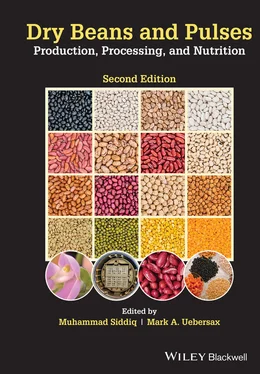The next unit operation involves the removal of materials that are heavier than the beans. This is a complex operation designed primarily for removing stones and mud balls, which are a result of the harvest. The use of a gravity table provides a large surface area with vibrating mechanical force to remove these heavier materials. This shaking action and the slight incline of this gravity table impart greater energy to the denser stones or mud balls. Because of the density differences, the heavier materials proceed to move up the incline and are segregated over the edge of the table.
In the gravity separator, a large volume of dry beans is spread in a very thin layer and continuously moves over the gravity table. As this table rapidly shakes, it sorts the stones and mud balls and allows the beans to pass forward. The stones and mud balls are separated from the dry beans and are collected in a waste disposal bin. Stones and mud balls are characteristic of the geophysical structures within the bean‐growing region and may vary in size, shape, and density.
Bean size separation is achieved by screening over a series of sieves. This screening provides increased uniformity of size and shape within a specified lot of beans and separates materials, which are both larger and smaller than the desired bean. Thus, beans are collected as either “overs” or “throughs” with respect to the individual sieve size. The overs are materials that do not pass through the screen and the throughs are materials that do pass directly through the sieve. With the proper size configuration of a series of screens, the vast majority of both oversized and undersized material will be readily eliminated. Large seeds, small seeds, splits, stones, and additional mud balls can be removed through various screening operations (Uebersax and Siddiq 2012).
A final cleaning stage incorporates color sorting by equipment that possesses a series of photoelectric cells commonly referred to as electric eyes . Each individual bean is viewed for appearance. Each bean is channelled past a photoelectric cell positioned within subdivided individual lanes; discolored beans are rejected by a blast of air. This highly sophisticated cleaning system will result in improved uniformity of beans possessing “good” color with limited damage (Uebersax and Siddiq 2012). It is noted that beans of contrasting classes and other grains are removed based on color differences.
Bingen and Siyengo (2002) reported that more sophisticated electro‐mechanical cleaning and sorting equipment has set the conditions for elevators to respond to canning and processing standards, but it has also strengthened the role for individual expertise in grading. Instead of supplanting individual judgment, the investments in more sophisticated technologies require continued reliance on human expertise ( the human eye ) for grading beans.
Figure 4.3 shows the appearance of beans and rejected debris samples taken at various stages of dry bean cleaning operations. As with all agricultural commodities, appropriate and specific bean quality standards must be established to enable adequate commercial commerce. It is important that thorough sampling and systematic inspection of each bean lot is conducted to assure compliance with designated quality specifications.
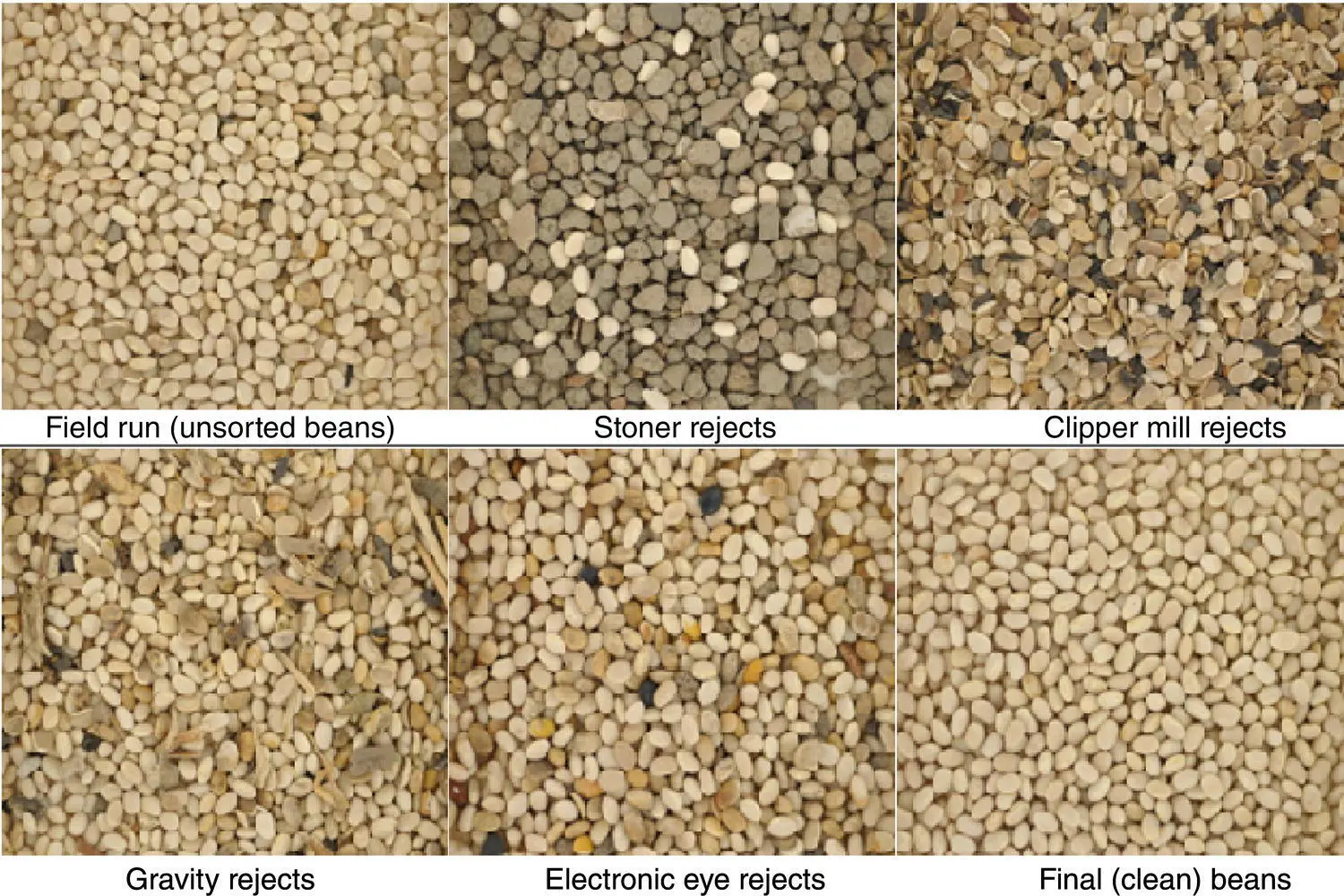
Fig. 4.3. Appearance of samples taken at various stages of dry bean cleaning/sorting operations. (For color detail, please see color plate section.)
Source: Original images by authors.
DRY BEAN STORAGE AND HANDLING
Generally, beans are stored in silos or steel bins at the local elevator ( Figure 4.4 ) and are continually (and often continuously) monitored for storage stability prior to shipment. During severe weather changes in temperate climates, significant temperature gradients form within the bin or silo and, thus, moisture migration may occur within the beans. Therefore, it is important to provide continuous aeration (Navarro et al. 2012), to ensure that the beans are not molding or producing heat, and subsequently being damaged or developing musty off‐odors or off‐flavors.
Dry beans are conveyed to large storage silos or steel bins for interim or long‐term storage prior to additional cleaning. The central elevating system lifts beans from the receiving pit and deposits them on conveyors in order to fill the bins. Within each bin is a device termed a “bean ladder” that will enable beans to slide in a circular path to the bottom of the bin, thus minimizing seed coat damage. It is a general practice to monitor the moisture content within the silo and use airflow from the bottom of the bin proceeding through the beans and exiting either at the top or the bottom of the bin to improve equilibration and distribution of moisture. Beans are then subjected to density separation using a gravity table . Beans are screened for size, sorted for color using an electronic eye system, and finally, stored in silos or bins prior to packaging in bags or totes, or directly shipped in bulk rail cars or trucks for delivery (Sacklin 1985; Rodiño et al. 2011).
Beans may be subsequently air dried to less than 18% moisture to assure storage stability. Greater levels of bean moisture will result in intrinsic fungal spoilage. Such spoilage is characterized by a series of biological cascading processes that manifest as physiological heating, moisture migration and accumulation with subsequent catastrophic quality failure. Initiation of spoilage will migrate through the storage vessel and result in a significant product loss during dry bean storage. On‐farm storage in small bins is common; however, the vast majority of beans are handled in sophisticated commercial distribution systems designed with environmental monitoring and control devices (Grizzell et al. 1961).
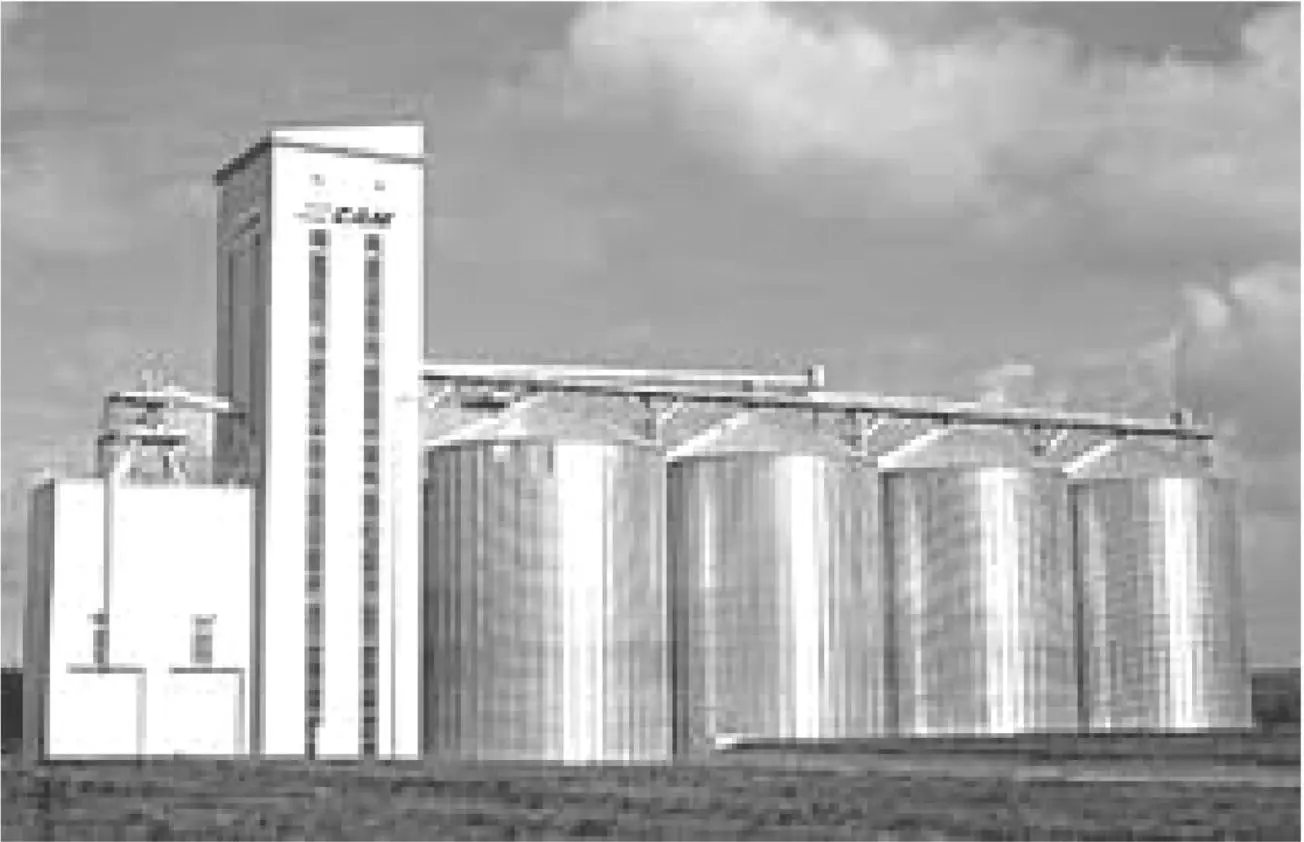
Fig. 4.4. Dry bean receiving and storage elevator.
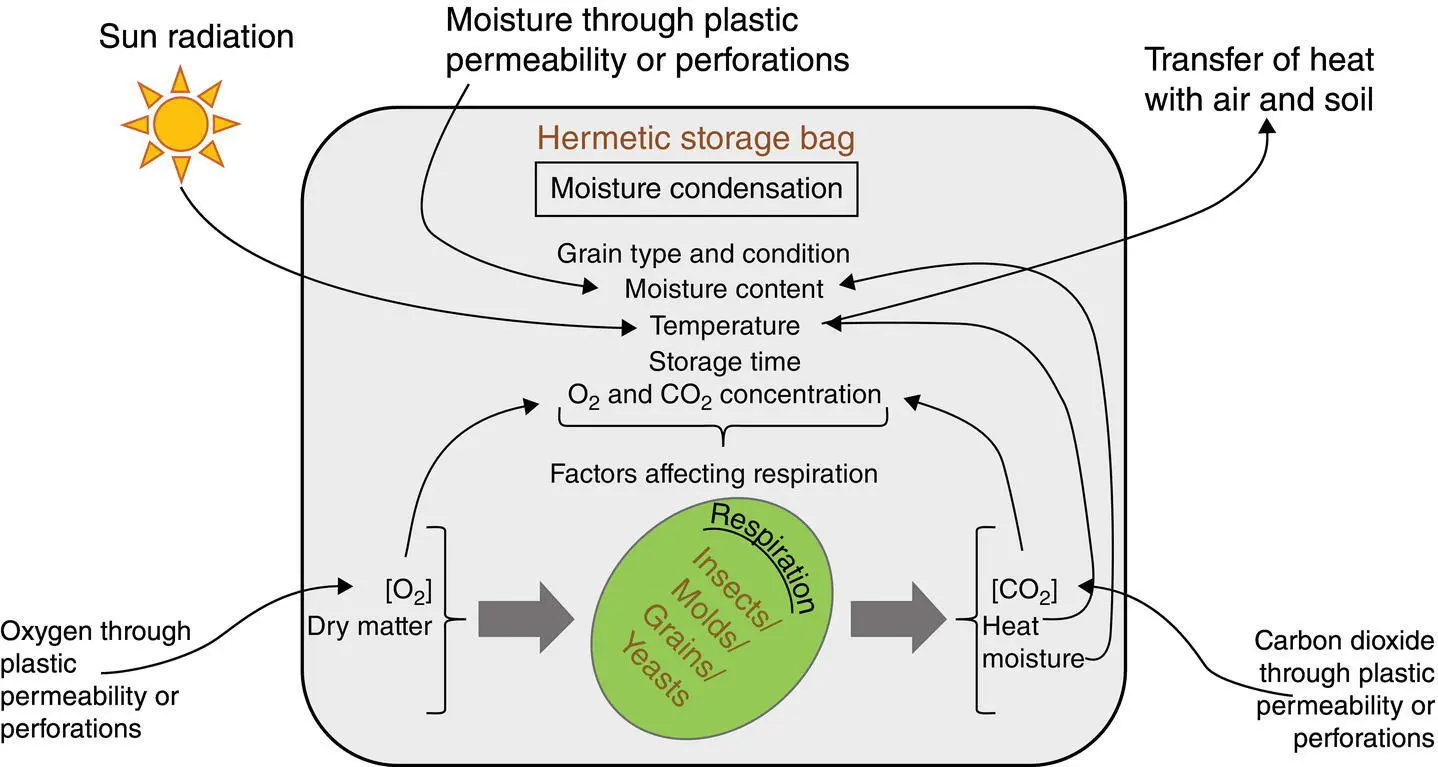
Fig. 4.5. Interrelationship of factors affecting the grain and microorganism respiration in storage.
Source: Kumar and Kalita (2017).
Figure 4.5 illustrates the relationship of the main factors affecting the respiration of grain, including legumes, and microorganisms in storage. Typically, the CO 2concentration inside the bags is used as an indication of the biological activity of grains. Two factors affecting the movement of gases (O 2and CO 2) in and out are bag’s permeability and the partial pressure of gases. On the other hand, gases concentration inside the bags is dependent on the balance between O 2and CO 2exchanges and the respiration levels of the biotic portion of grains. Higher initial moisture content of grains tends to facilitate increased CO 2concentration due to higher respiration rates (Cardoso et a. 2008; Kumar and Kalita 2017).
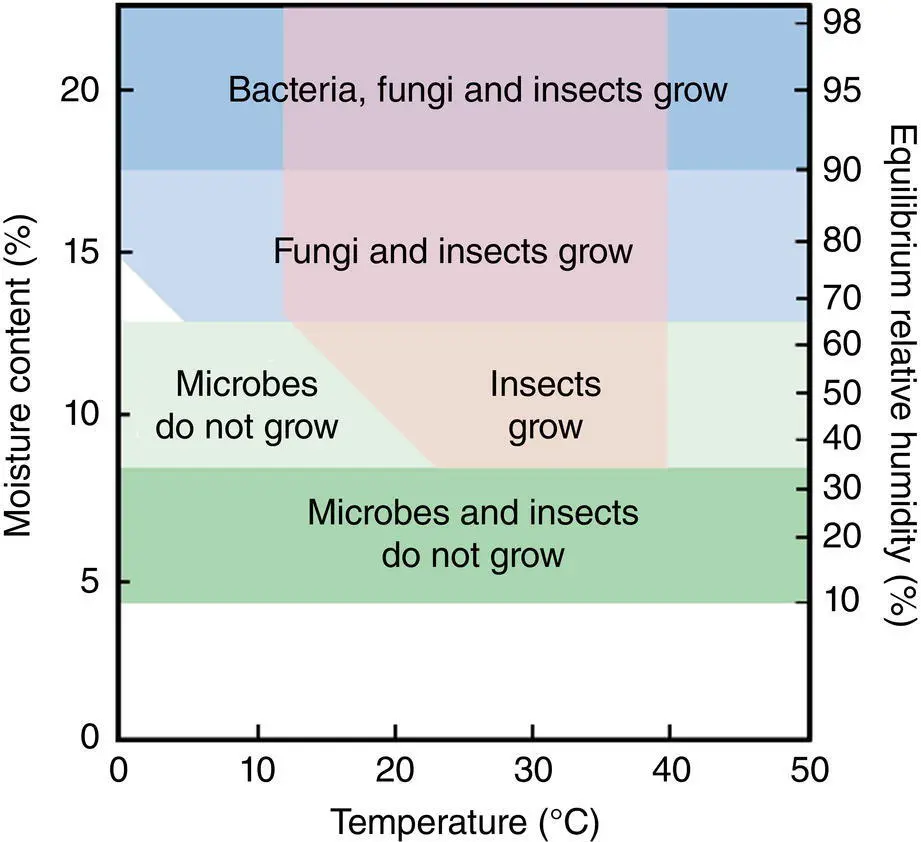
Fig. 4.6. Interaction of grain moisture, storage temperature and equilibrium relative humidity at which different organisms can grow in storage.
Source: Bradford et al. (2018).
Читать дальше
